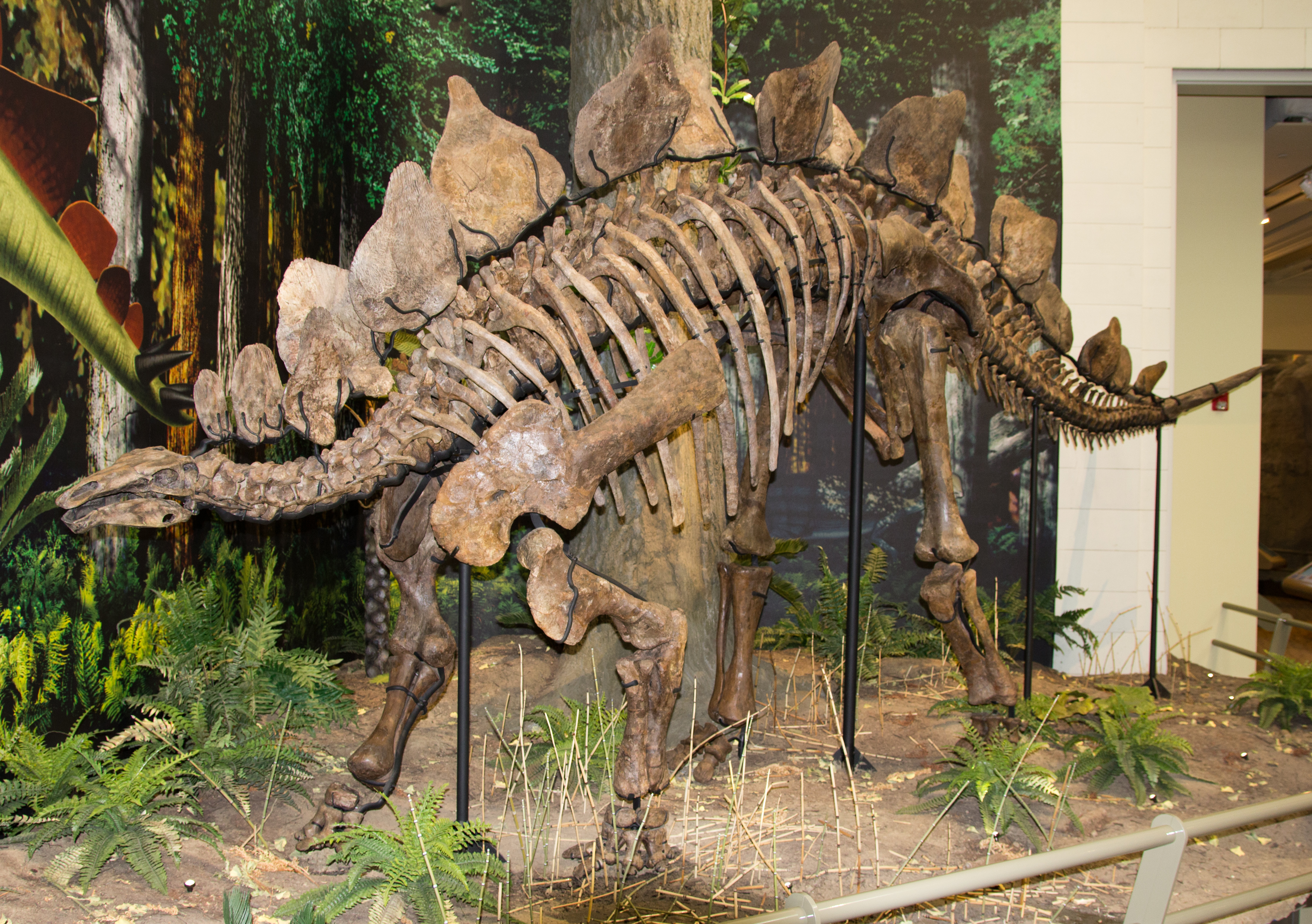 |
| Mounted skeleton of Stegosaurus ungulatus at the Carnegie Museum. The tail, plate, and spike arrangement have been updated in this mount to reflect current thinking following the study by Carpenter (1998). Photo by Perry Quan, CC-By-SA 2.0. |
Interpretation of the life appearance of stegosaurs has changed several times since they were discovered by O.C. Marsh in 1877. The first stegosaur fossil (belonging to the species S. armatus) were found near the town of Morrison, Colorado, but the specimen was disarticulated and only a few of the plates were preserved. Initially, Marsh thought that these plates played flat along the animal's back, forming a sort of turtle-like shell, or like the tiles on a roof (hence the name Stegosaurus, which means "roofed lizard"). Marsh also initially believed that stegosaurs were aquatic, due to this turtle-like appearance, but also that they would have walked on two legs on land.
